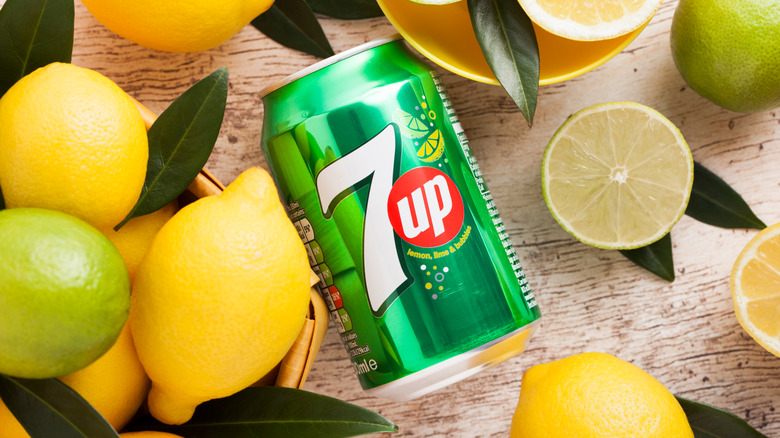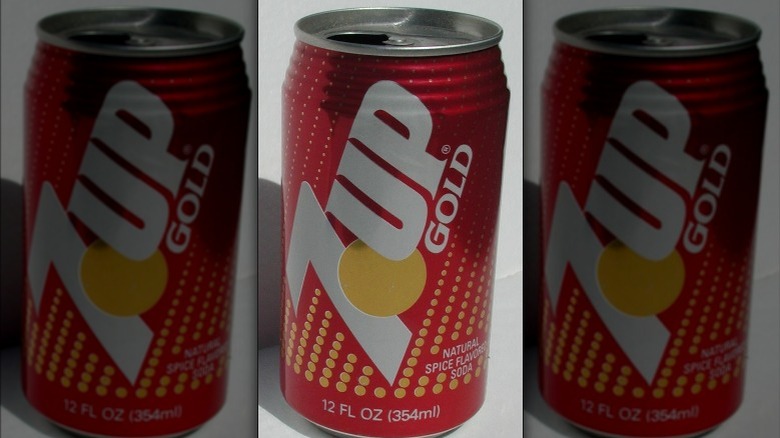The 7UP Failure You Probably Forgot About
When you crave a soda without caffeine, 7UP has always been the go-to choice. Sure, 7UP may not enjoy the popularity of Pepsi or Coke (or its archnemesis Sprite, for that matter), but it manages to hold its own. According to a 2022 piece published by Newsweek on the most popular soda brands out there, 7Up earned slightly under $1 billion in sales in the U.S. alone. Love it or leave it, there is no denying that this fizzy lemon-lime beverage is a beloved cultural icon — and it has quite a colorful history.
Among the things that you didn't know about 7UP might be the origins of its very short name. According to McGill University, the soda with one of the shortest names out there was once saddled with the outlandish moniker "Bib-Label Lithiated Lemon-Lime Soda." First marketed and released in 1929, the original recipe for 7Up contained lithium citrate, an ingredient that was used in the treatment of "bipolar disorder, depression, or mania." The name was later shortened to "7Up Lithiated Lemon Soda" before it was rebranded as the 7UP we know today. Considering 7UP has been around for nearly a century, it can be safely assumed that the brand has led a remarkable life — but it also experienced a pretty dark chapter in its history as a beloved beverage.
Meet 7UP's caffeinated cousin
In the decades since 7UP was first introduced to grocery shelves worldwide, there's been one massive failure the company would rather forget: the short-lived disaster known as 7UP Gold. If you don't remember 7UP's epic error in judgment, don't worry — comparatively, the product disappeared in the blink of an eye.
According to a report by The New York Times, 7UP Gold, which was released in 1988, was marketed as a "spice-flavored soda." Dark in color and caffeinated, the new beverage line had little in common with its citrus-like OG cousin. So why did 7UP decide to introduce this seemingly rogue offering? Per The New York Times, it turns out that the companies that owned 7UP and Dr. Pepper merged in 1986, two years prior to 7UP Gold's eventual release. Following the merger, the new conglomerate then embarked on a mission to use a previously abandoned recipe developed at Dr. Pepper.
So what went wrong? In 1989, the company's then-president, Roger Easley, told The New York Times that the product confused the public. "People have a clear view of what 7UP products should be — clear and crisp and clean, and no caffeine," Easley explained at the time, adding, "7UP Gold is darker and it does have caffeine, so it doesn't fit the 7UP image.” Without a clear understanding of what exactly 7UP Gold was, the public stuck to more relatable products, and the somewhat bizarre soft drink disappeared from shelves less than a year after its 1988 debut.

